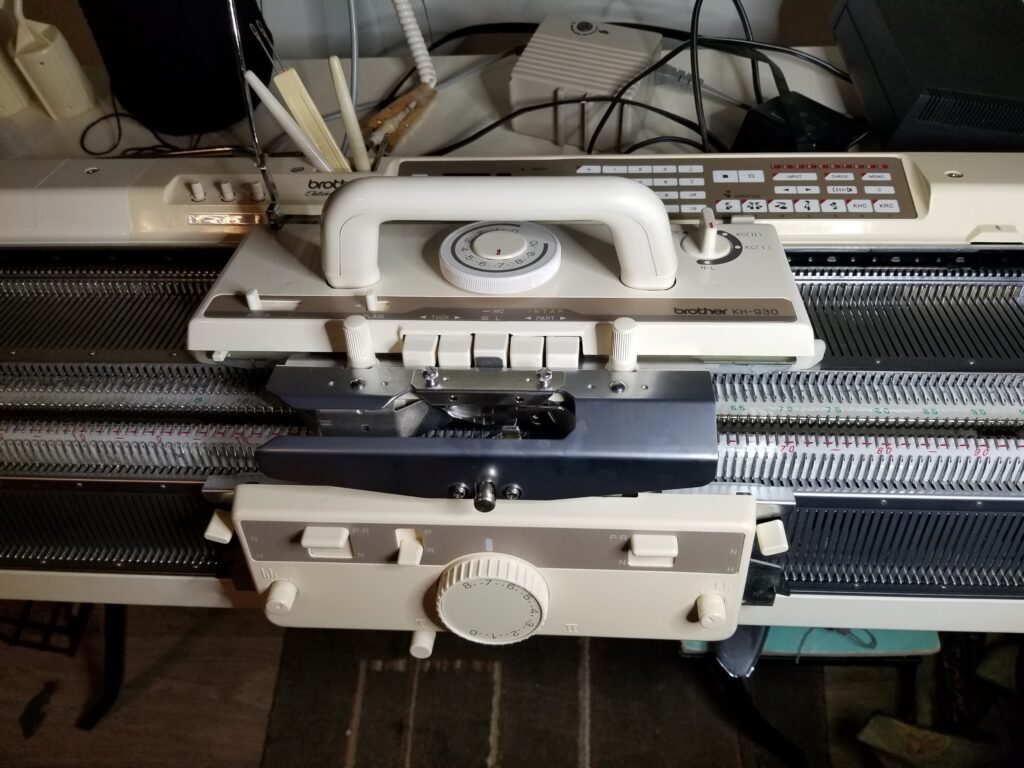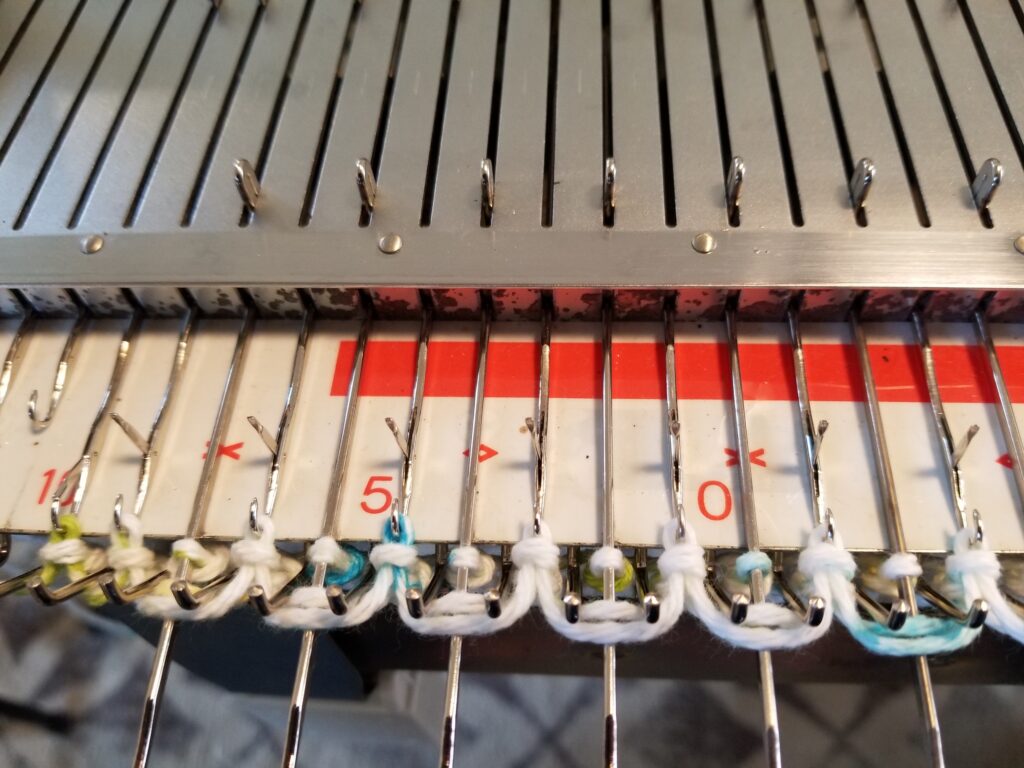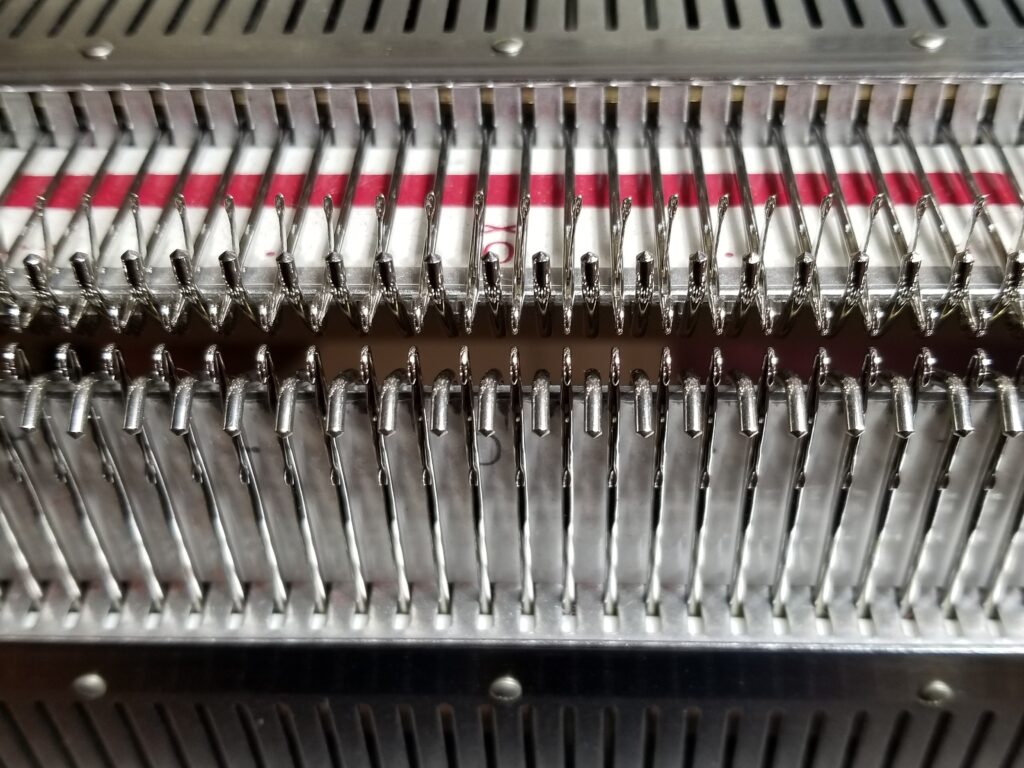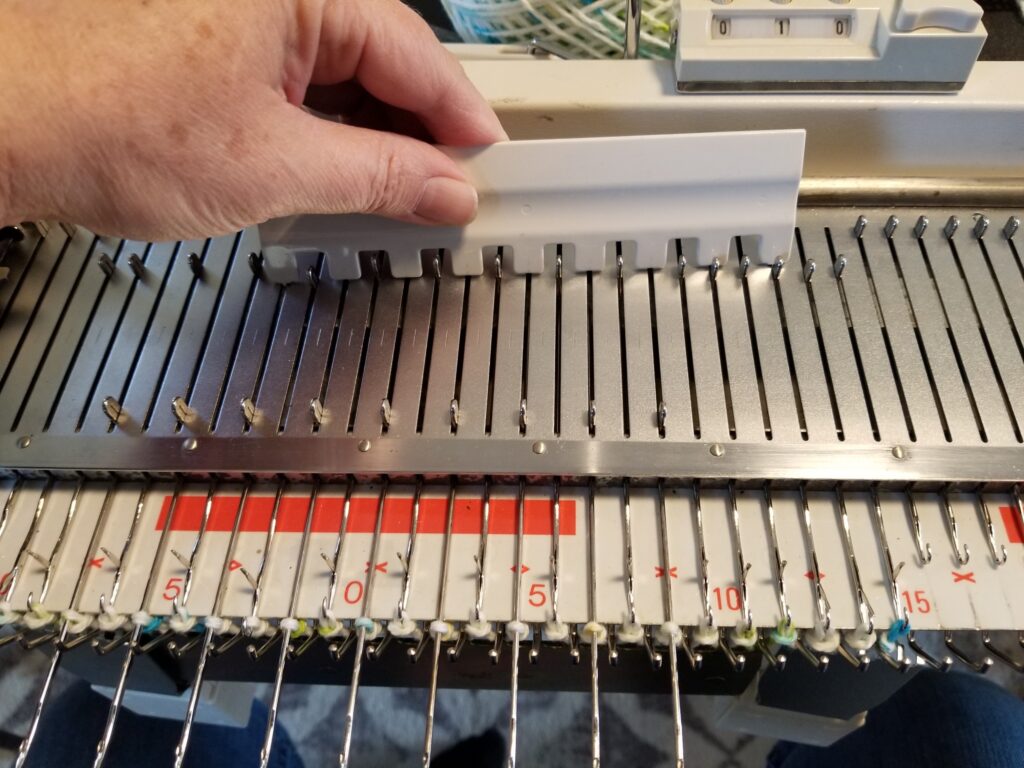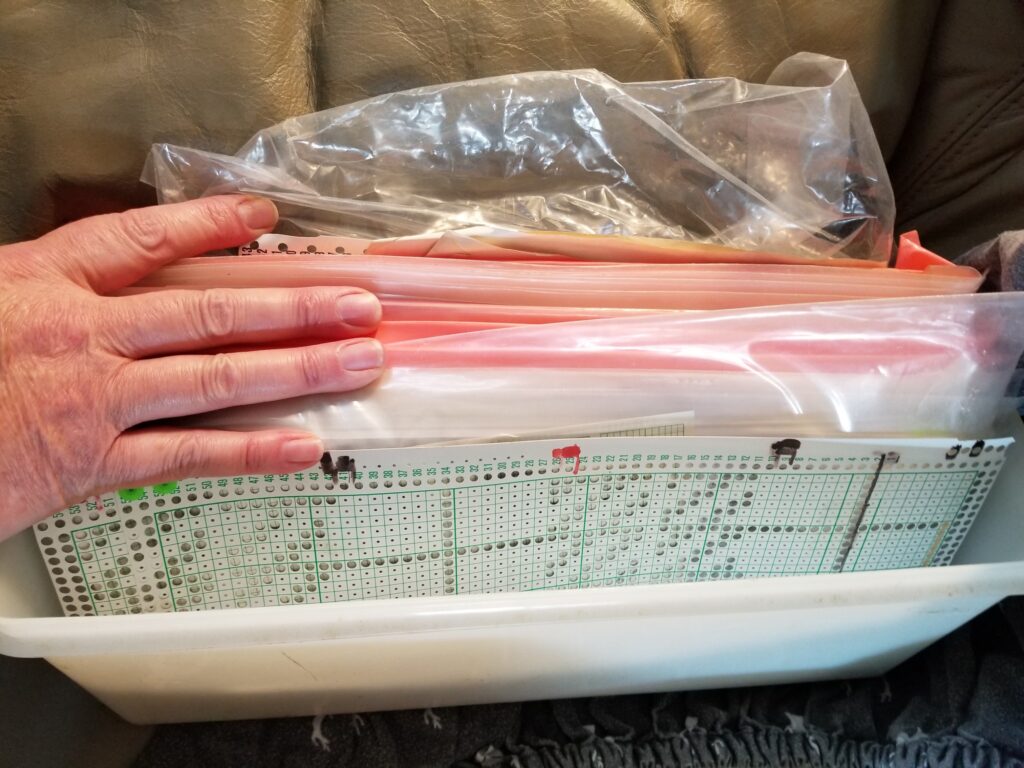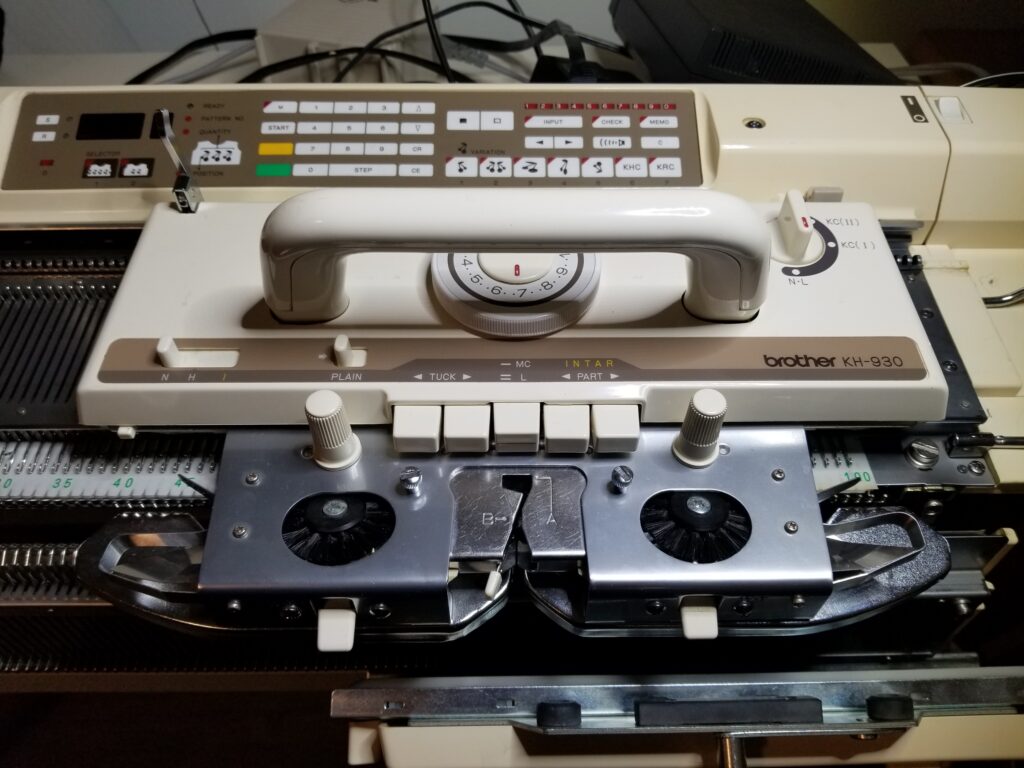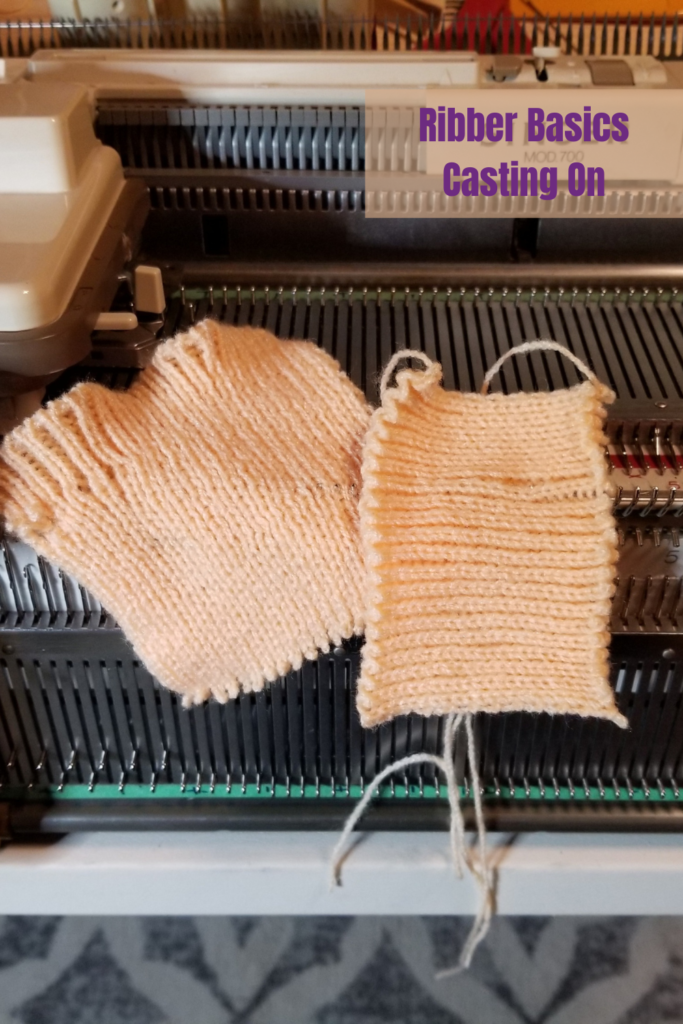 Casting on with the Ribber was one part of machine knitting I really struggled with. I still struggle with it some days. Getting the first steps exactly right and then completely bodging it up in the next one because I missed a carriage setting is the norm for me. But this is how we do the circular cast on with Singer Knitting Machines.
Casting on with the Ribber was one part of machine knitting I really struggled with. I still struggle with it some days. Getting the first steps exactly right and then completely bodging it up in the next one because I missed a carriage setting is the norm for me. But this is how we do the circular cast on with Singer Knitting Machines.
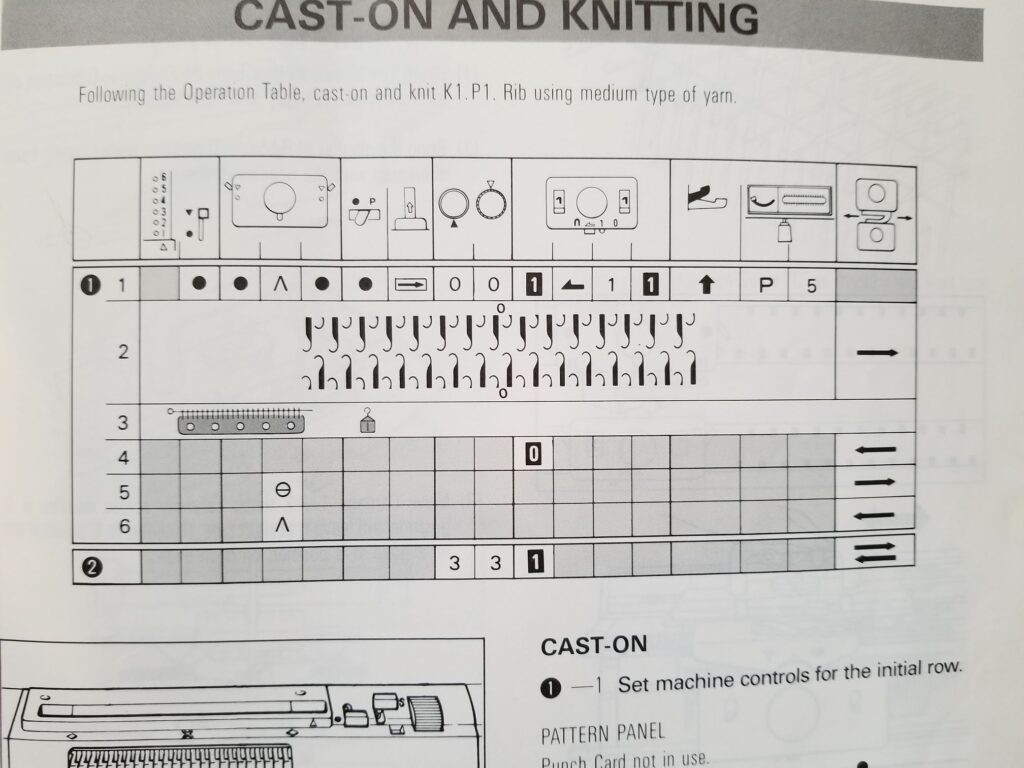
The photo above is the Singer operation table for casting on with the ribber.
Row 1
Row 1 tells you your settings. Reading from left to right:
- Punch Card – we’re not using it for ribbing, so set it to the circle.

- Knitter Carriage – Set the Left Side Lever to the circle, set the Stitch/Cam Lever to Stockinette and the Right Side Lever to the circle. Unless you’re knitting part rows, Russell Levers are always set to ‘II’.

- Next 2 items are on the ribber arm that connects the two carriages. One is in the image above between the 2 screws that attach it to the knitter carriage.
- Tension Dials – here you are instructed to set the stitch size on both carriages to zero. The stitch settings need to be as tight as possible for this cast on method.
- Ribber Carriage Set Lever left is set to ‘1’, Pick Knob is set to the arrow rather than the ‘U’, auto set lever to ‘1’, and Set Lever right is set to ‘1’.

- Pile Levers – these are located on the sides of your ribber bed. The one with the blue circle.

- Half Pitch Lever and Swing – for 1 x 1 rib, we set the pitch lever to P and the swing to ‘5’.

- The final column tells you which direction to move your carriage in.
Row 2
Row 2 shows your needle arrangement. For a 1 x 1 rib every other needle of the main bed is put into work. On the ribber, every other needle but alternating with the main bed needles is put into work.
Row 3
Row 3 is just indicating you should add your cast on comb (affiliate link) and weights (affiliate link). Center your cast on comb in the work and evenly distribute your weights. The number of weights is based on number of stitches cast on.
Row 4
On row 4 you will adjust the settings for your Ribber Carriage. You will change the left set lever to ‘0’ so the ribber will not knit on passes to the left. Only the knitter carriage knits.
Row 5
You will change the cam lever on your knit carriage to slip. For this pass, only the ribber knits.
Row 6
Cam lever goes back to stockinette, only knit carriage knits.
The cast on is complete.
Now you can set your tension on both carriages to one appropriate for your yarn. You will also need to set the ribber carriage to knit in both directions by changing the left set lever back to ‘1’
If you have a ribber but haven’t used it or are considering getting a ribber for your machine you might be interested in my post on Why You Want a Ribber for Your Knitting Machine.

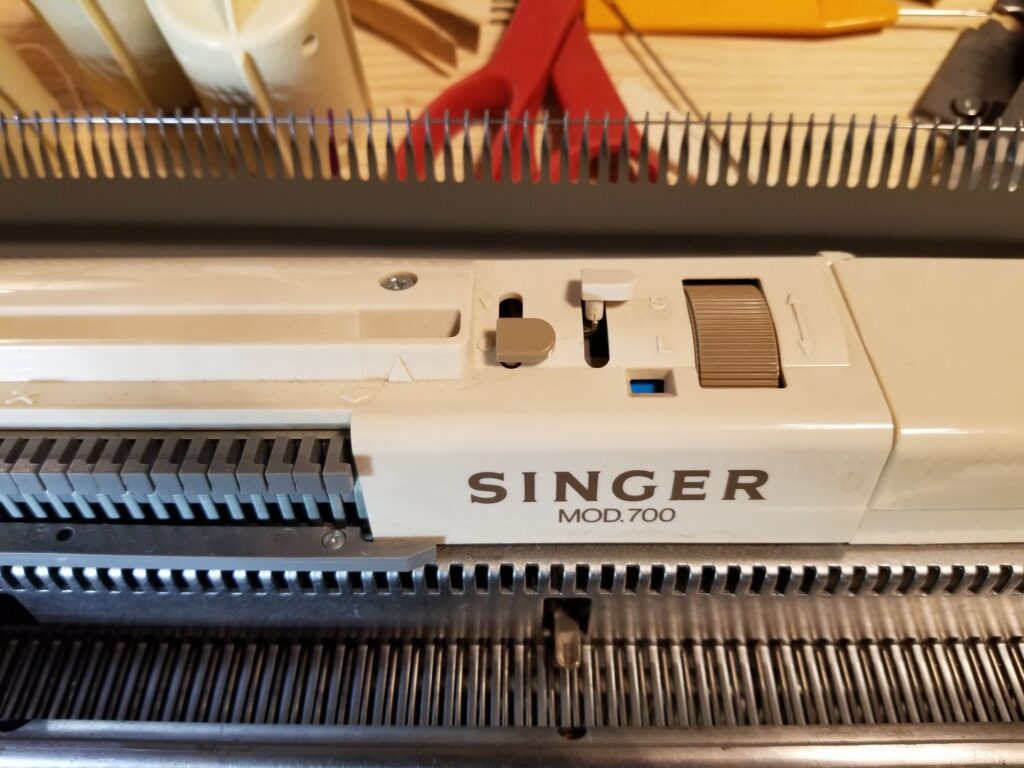
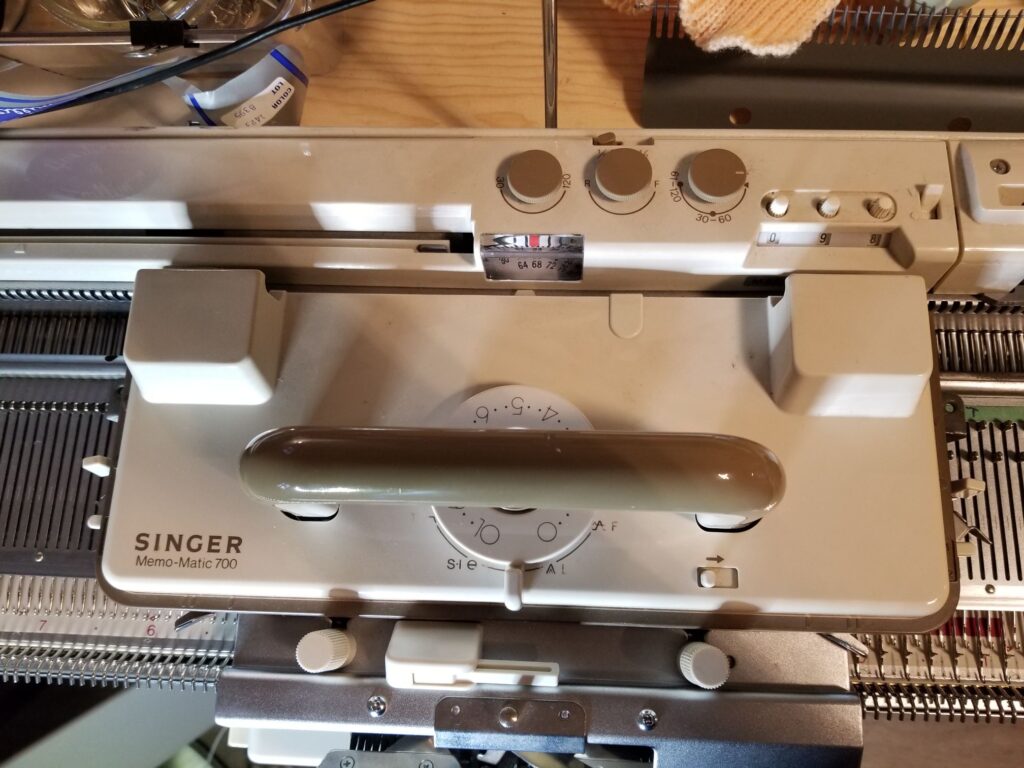
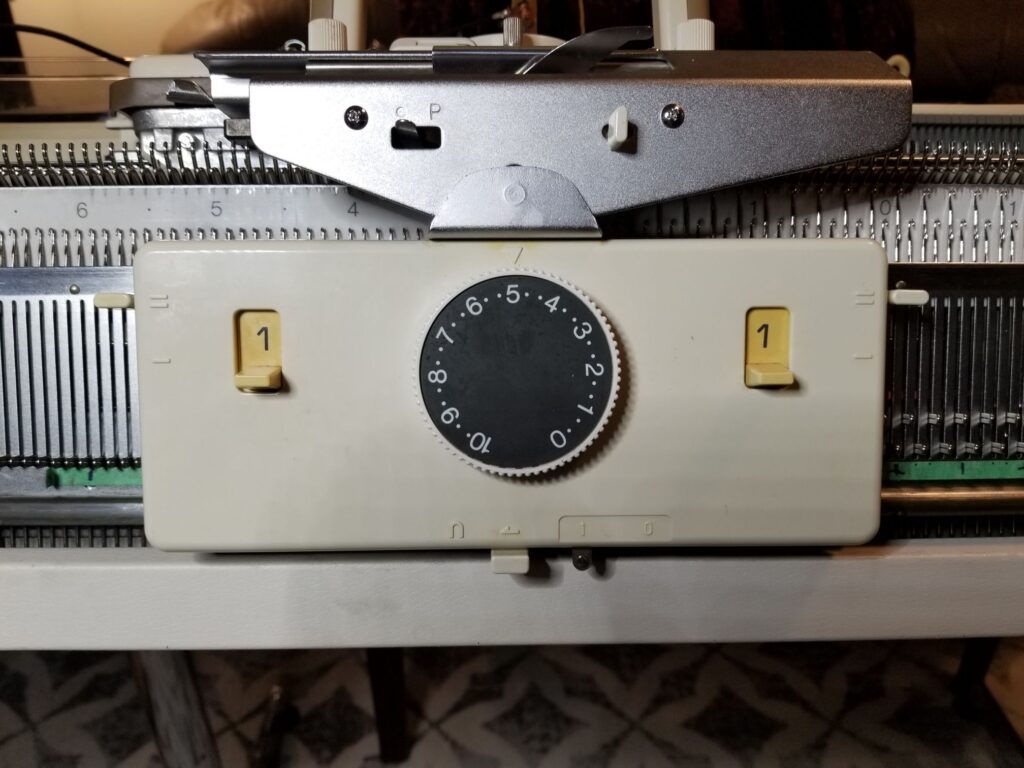
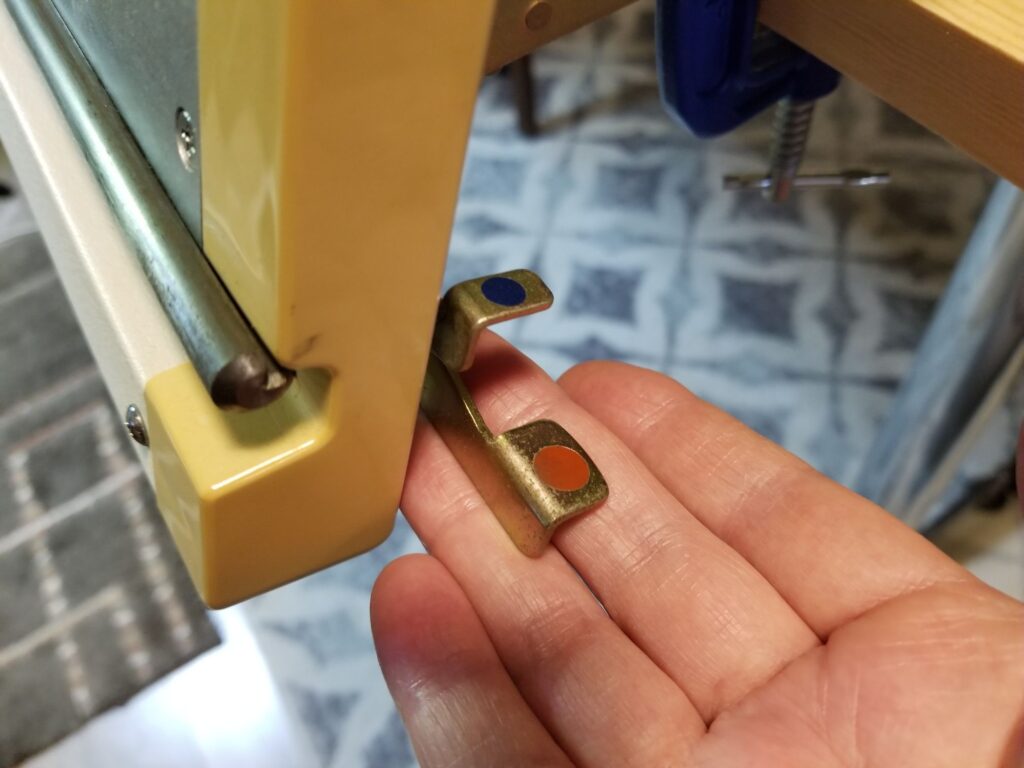
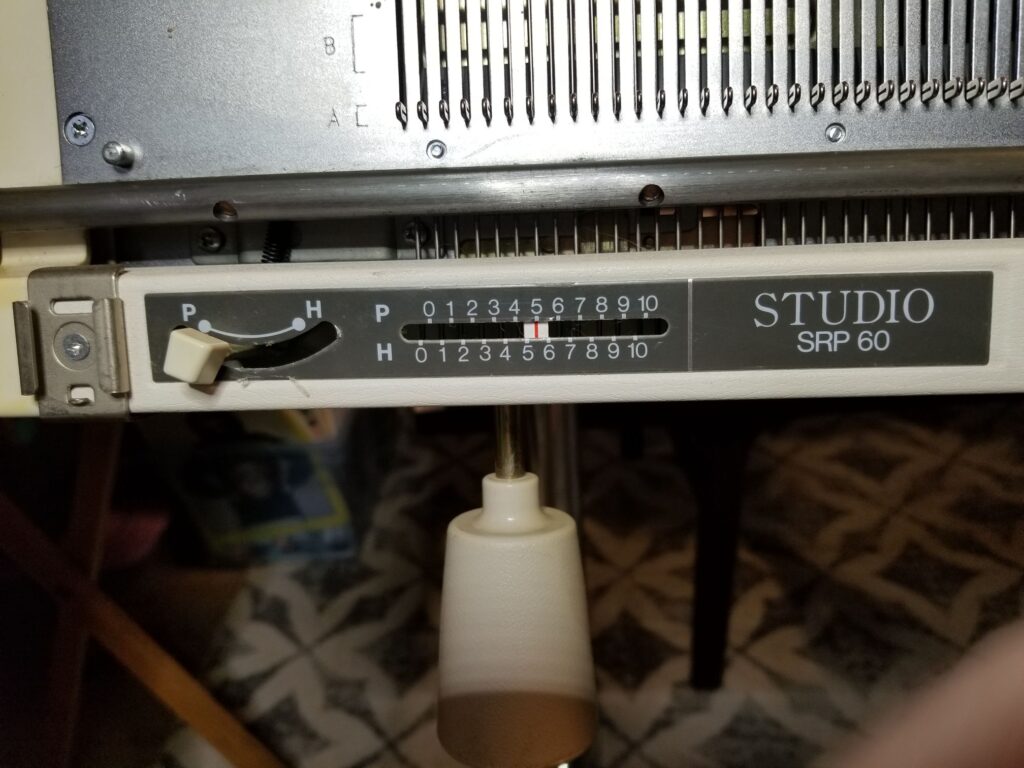
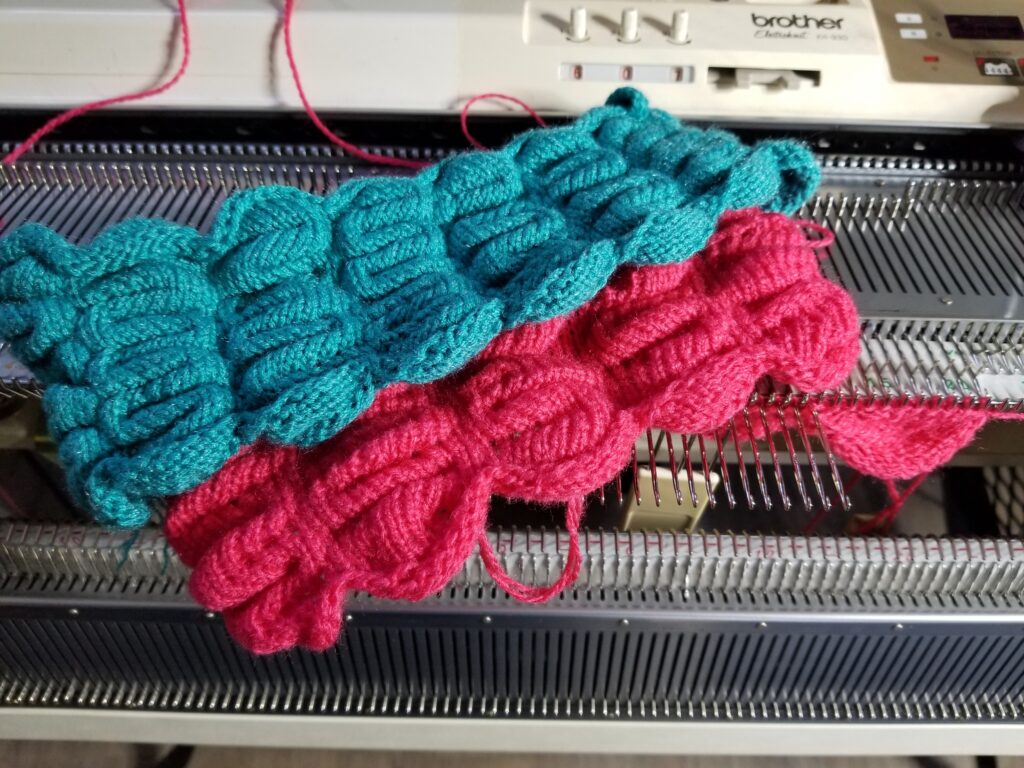
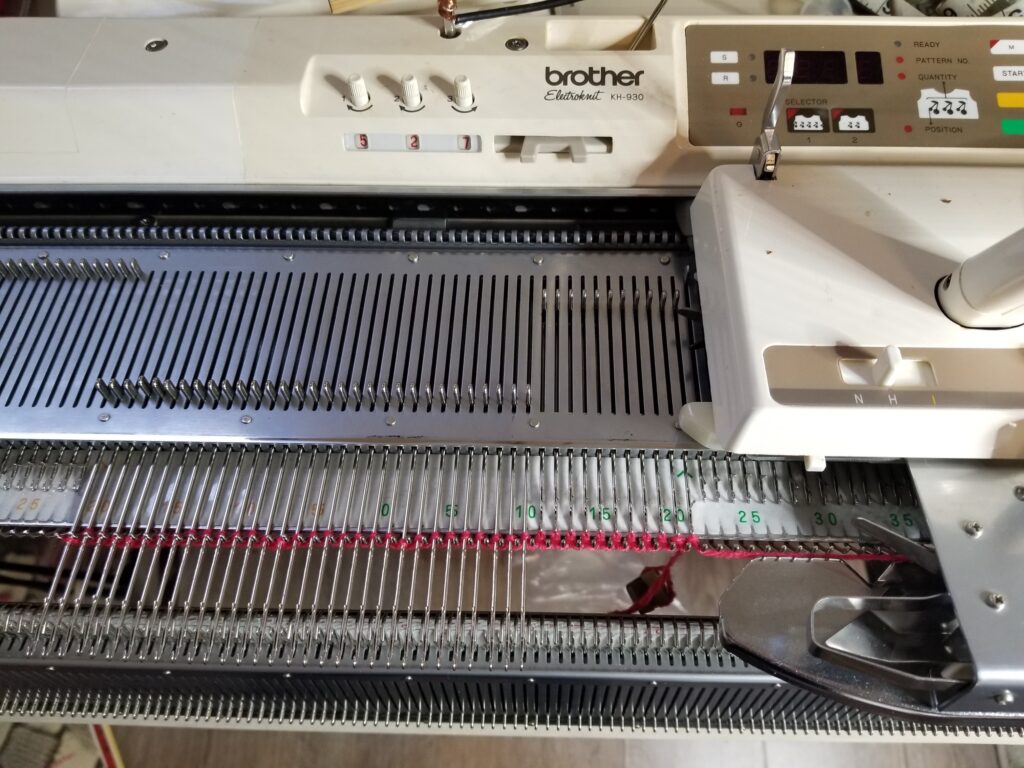 Cast on by hand towards the left. Choose a multiple of 10 plus 1 stitch on either end. Knit one row – COR.
Cast on by hand towards the left. Choose a multiple of 10 plus 1 stitch on either end. Knit one row – COR.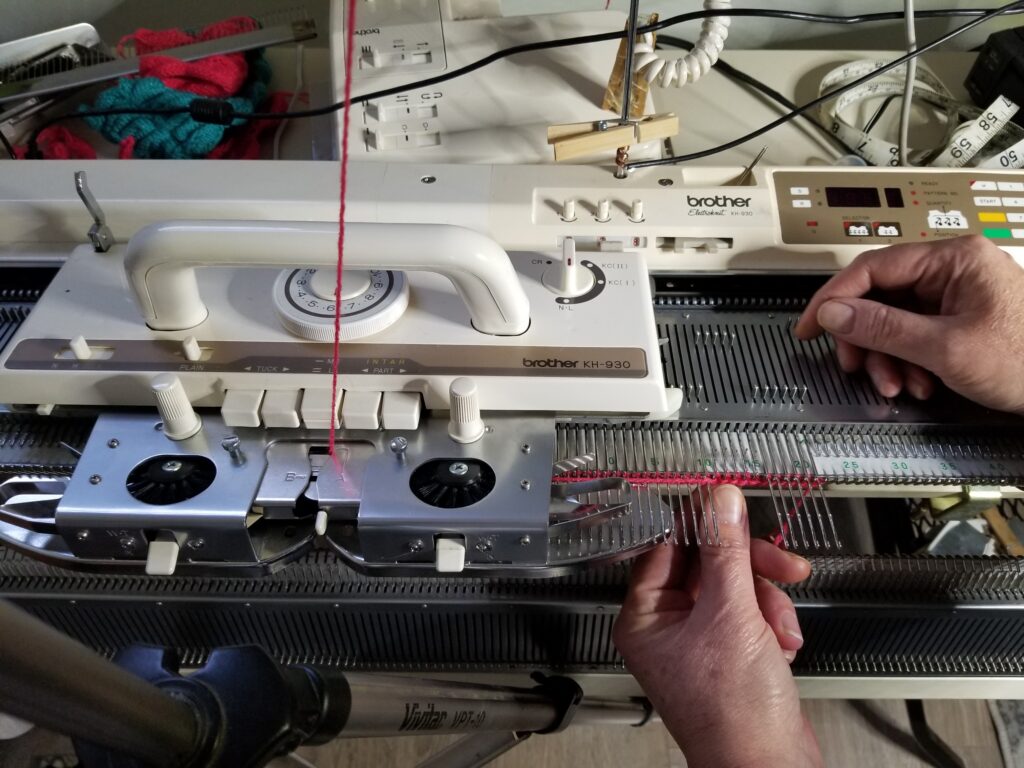
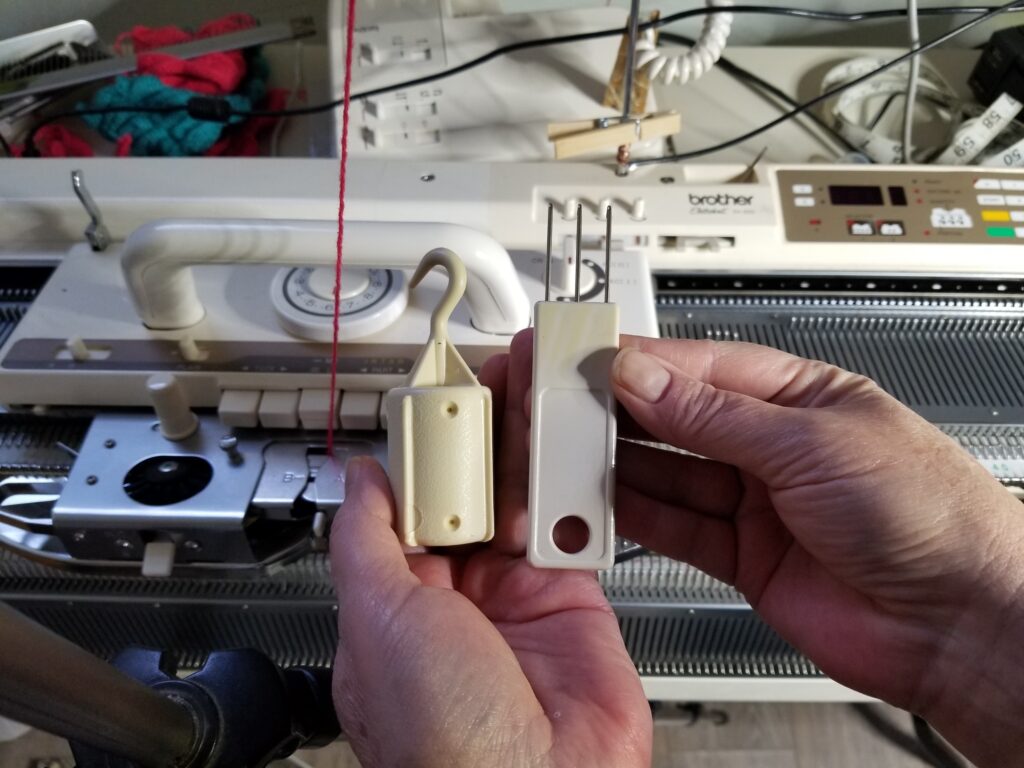
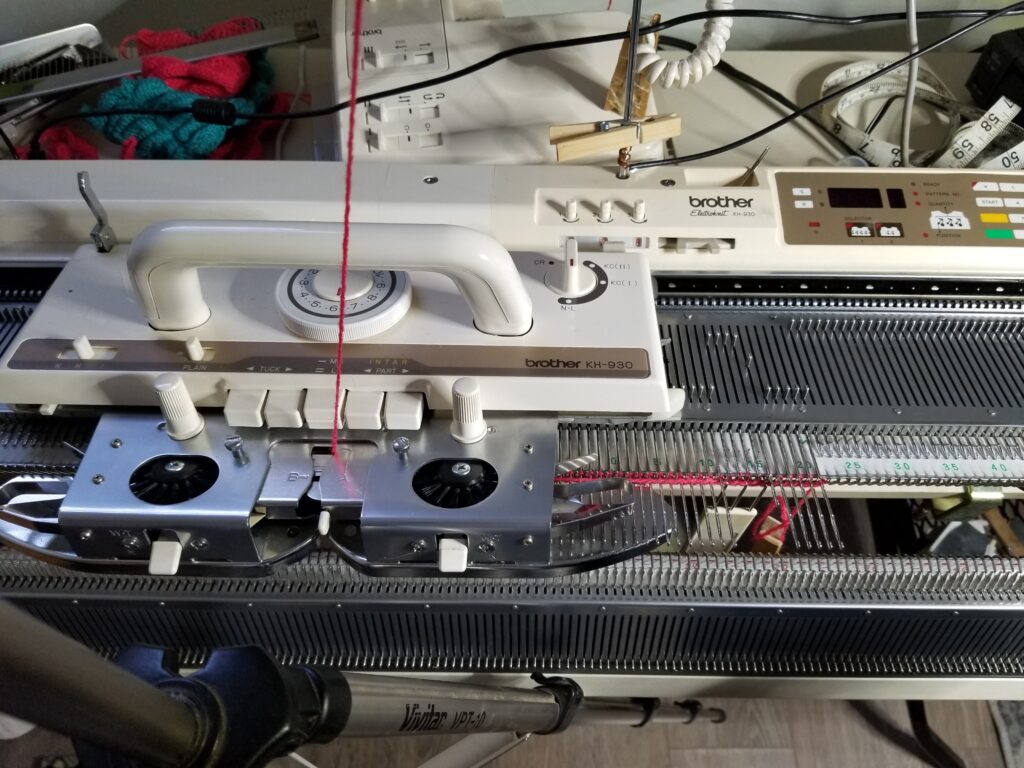
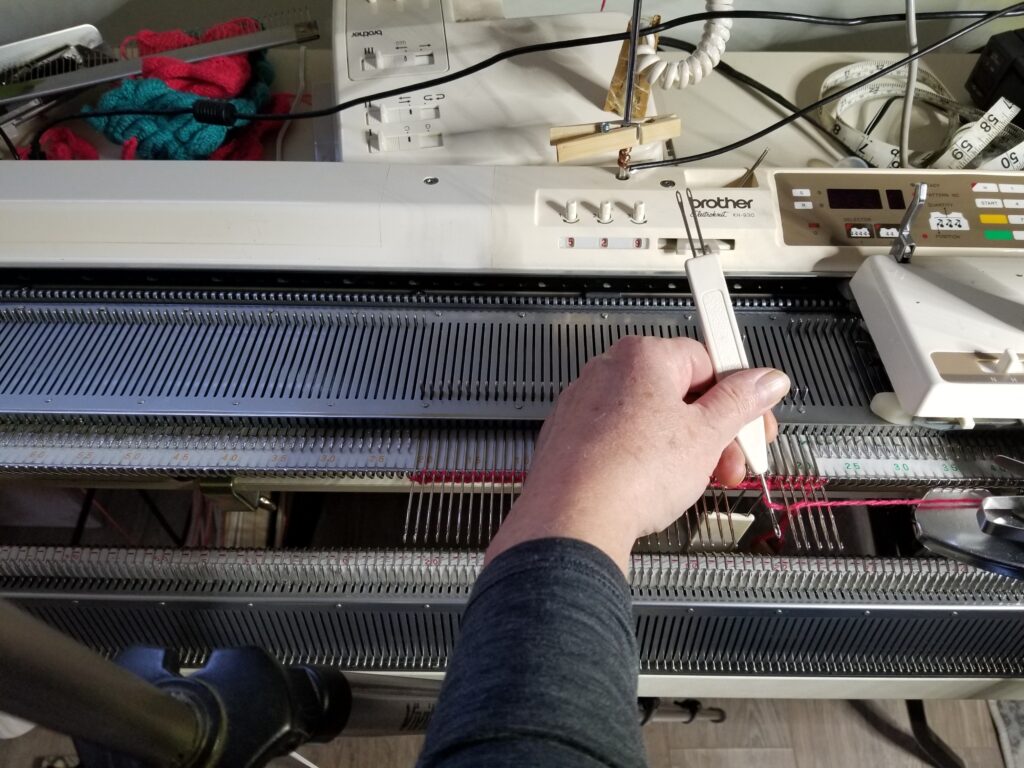
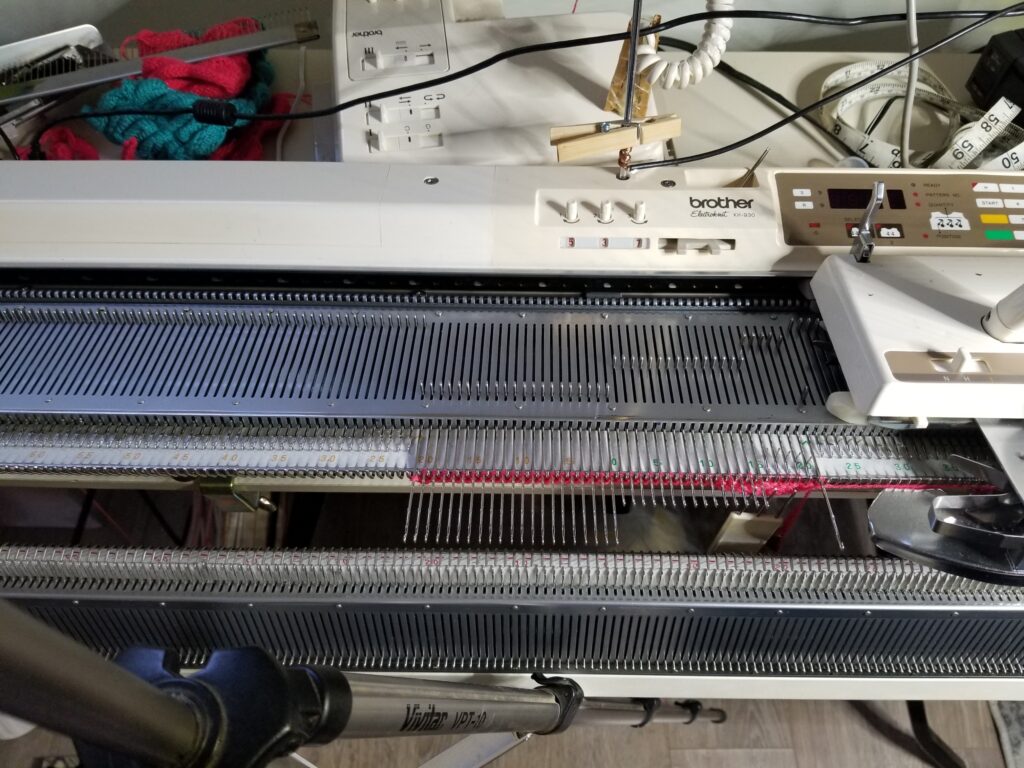
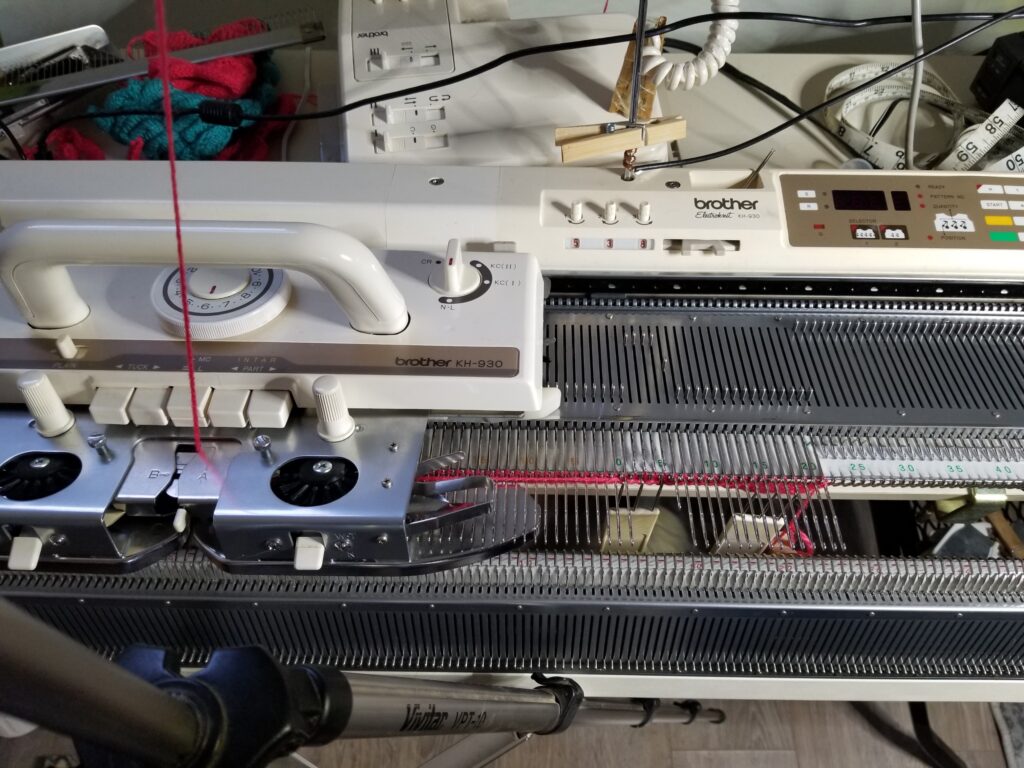
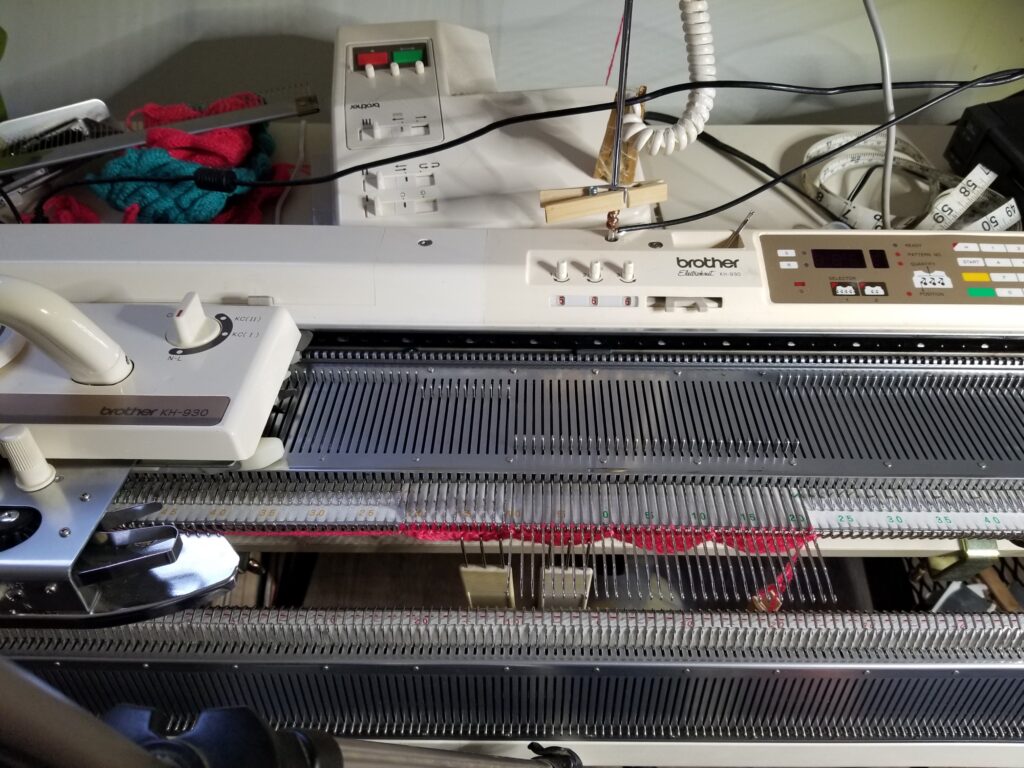
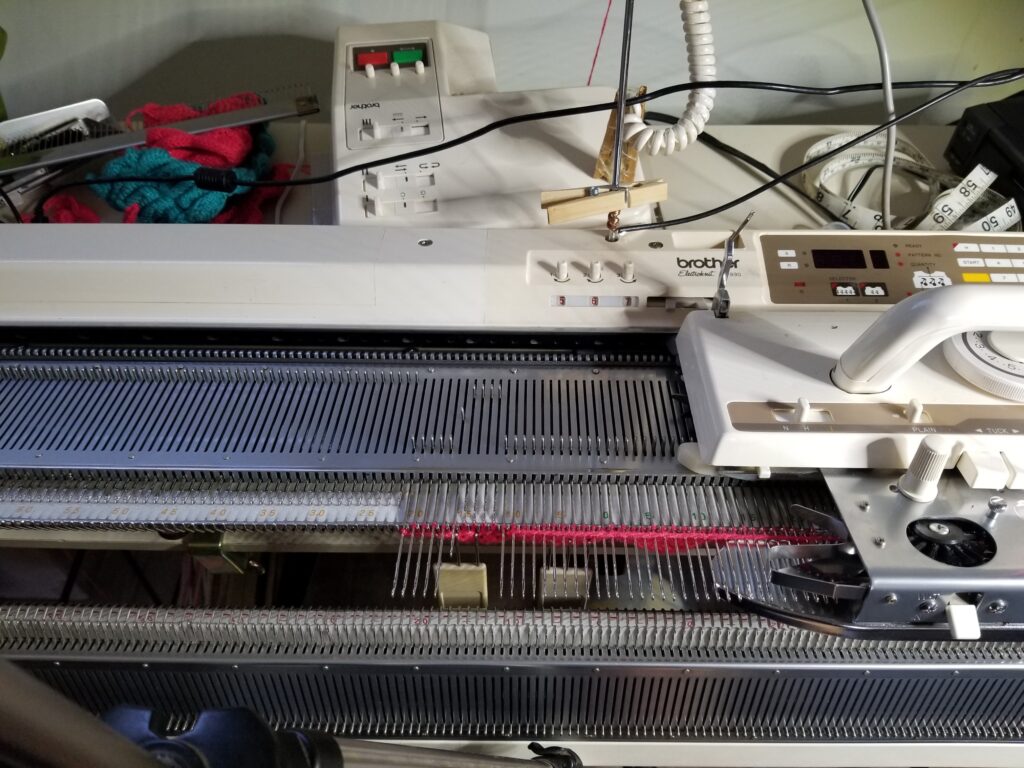
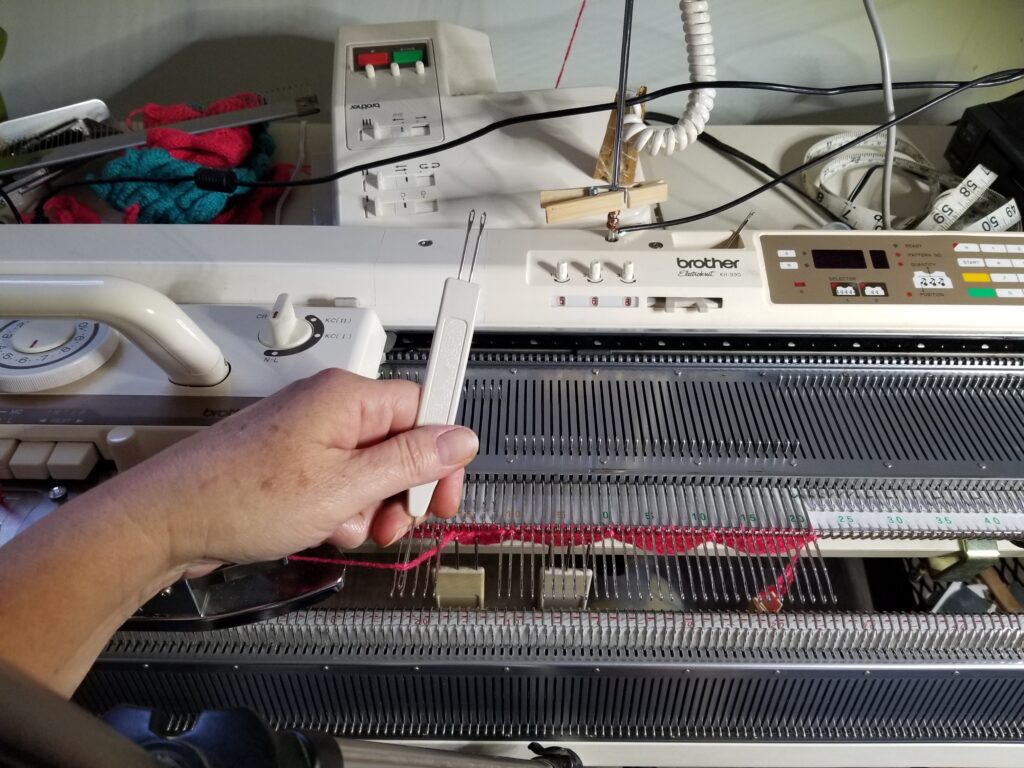

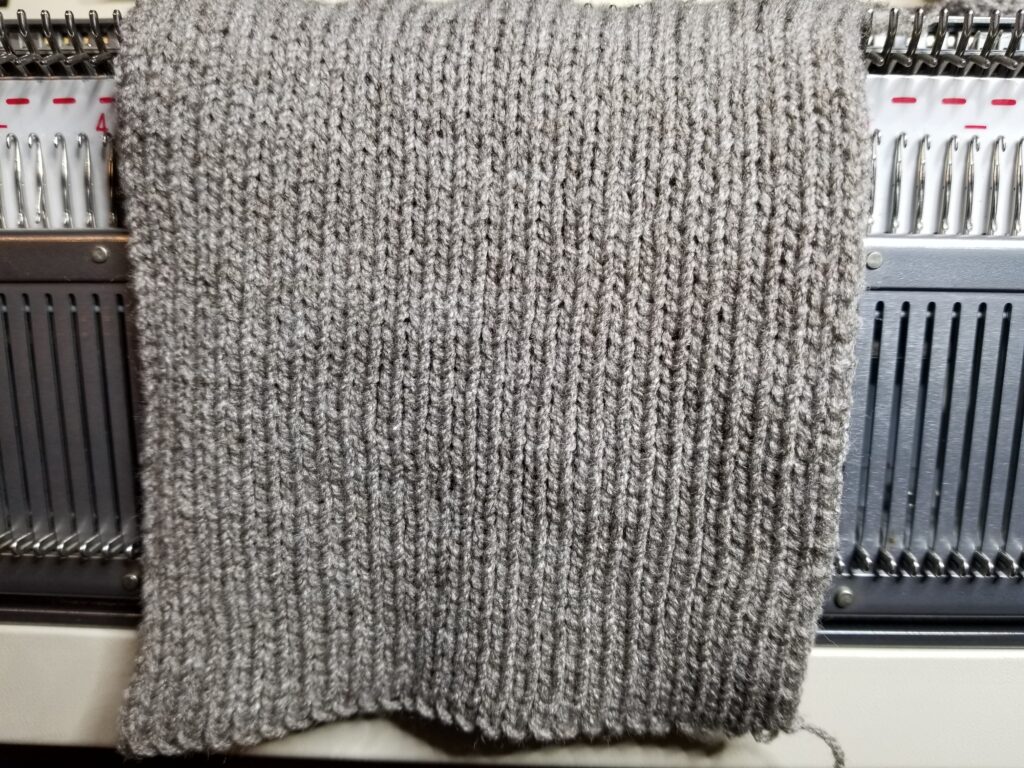
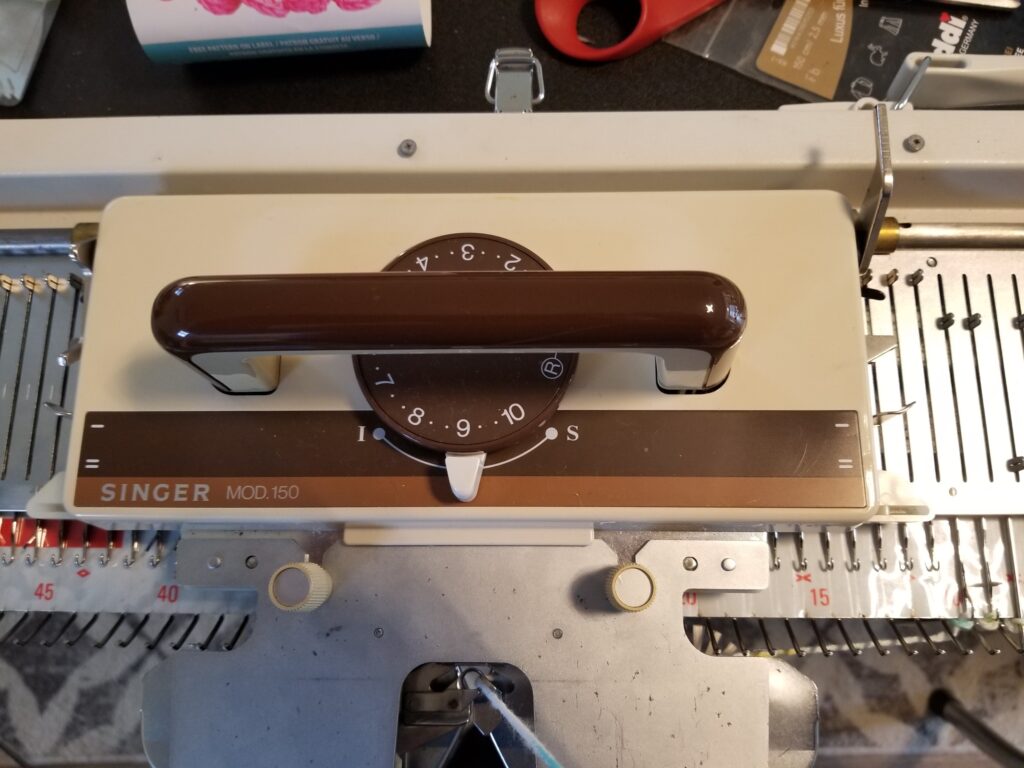 It’s usable after lots of elbow grease, I’ve even knit
It’s usable after lots of elbow grease, I’ve even knit 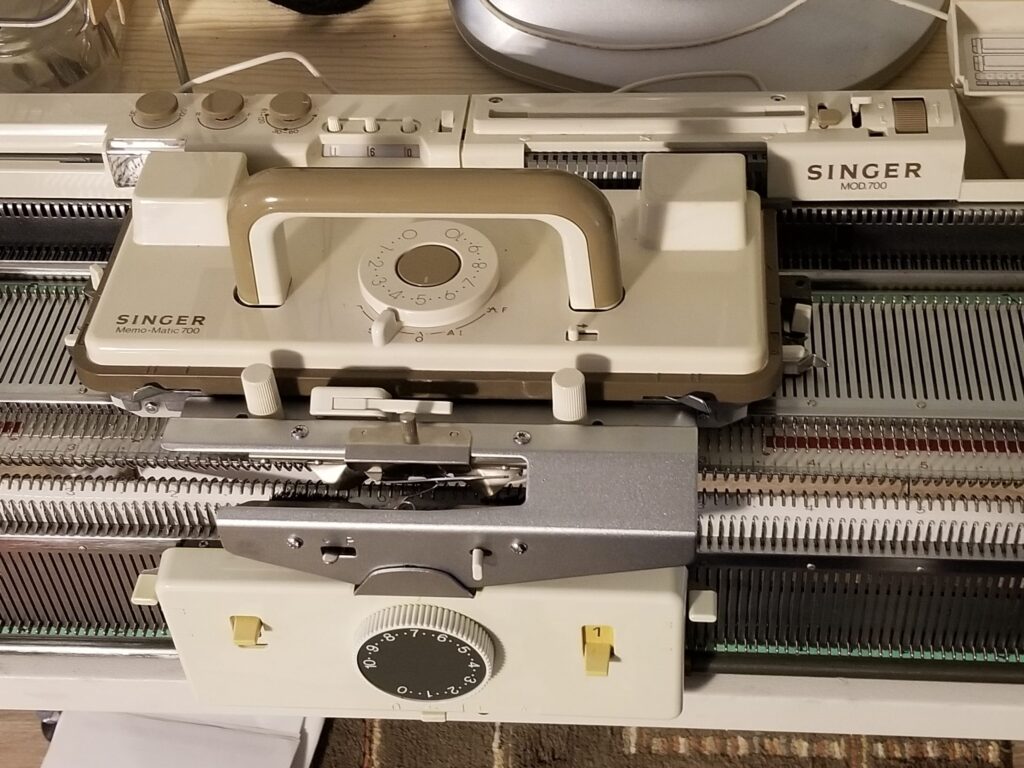 When I brought my Singer 700 home, I did a full tear-down of the carriage to remove felted yarn fibers and actual yarn from around the spindles of the patterning drum. I also replaced a lot of the needles on both beds because it had been used by someone who did not know what they were doing – before me that is, since I had no clue what I was doing when I first used it either.
When I brought my Singer 700 home, I did a full tear-down of the carriage to remove felted yarn fibers and actual yarn from around the spindles of the patterning drum. I also replaced a lot of the needles on both beds because it had been used by someone who did not know what they were doing – before me that is, since I had no clue what I was doing when I first used it either.